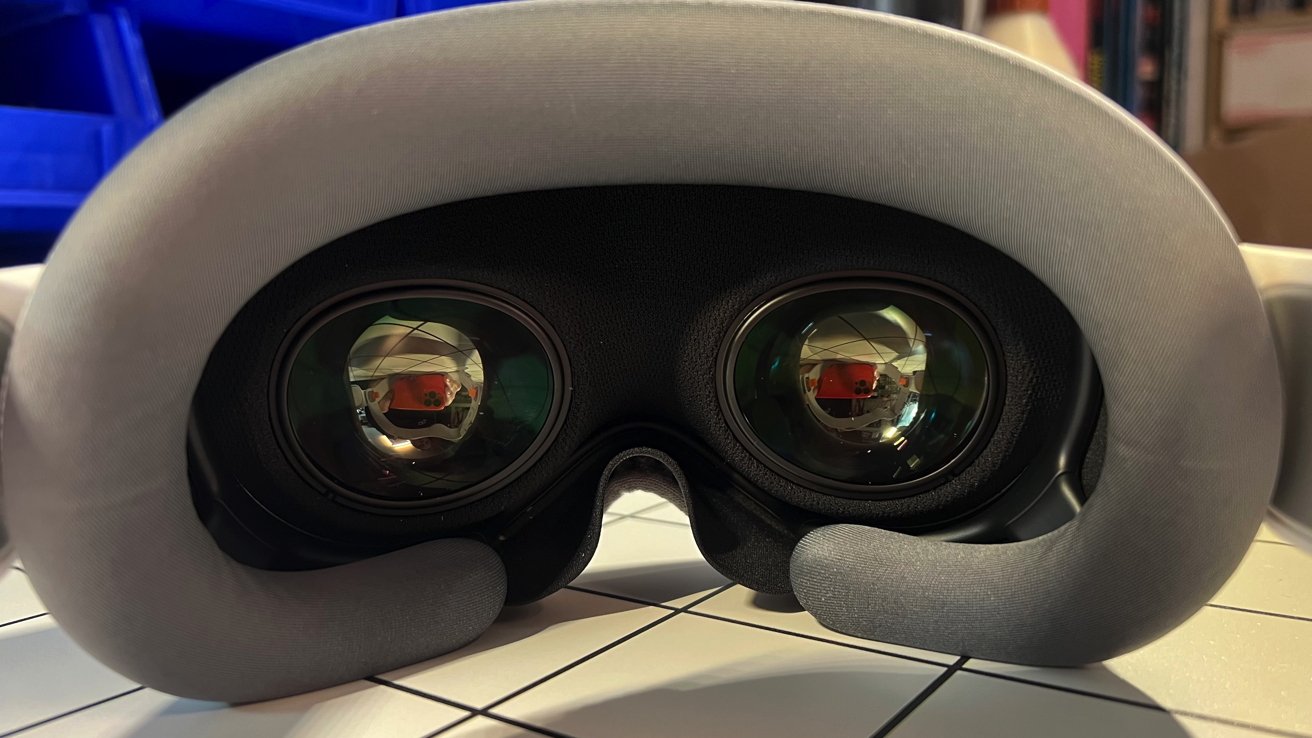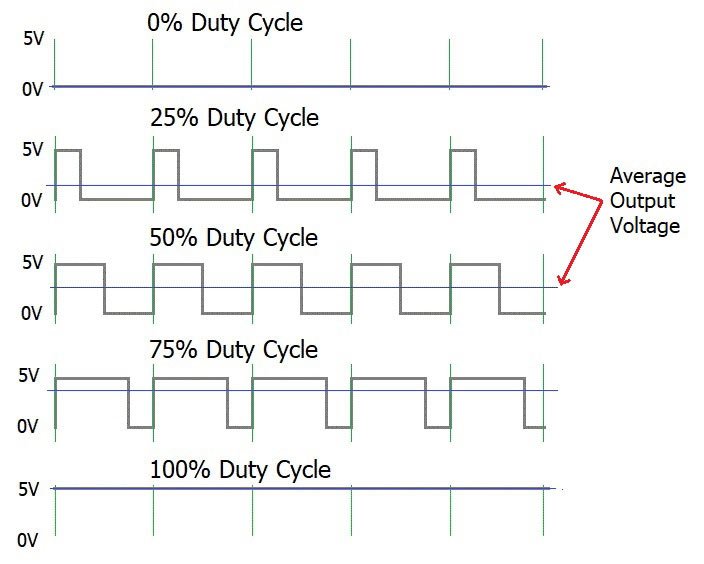Why Apple Vision Pro's constant strobing matters to your health
The Apple Vision Pro uses a common technology that is at the core of some of the health warnings about the device. Here's what that technology is, why it's crucial to the headset, and why it may cause problems for some users.

Inside of Apple Vision Pro
An obvious potential health issue with Apple Vision Pro is motion sickness. Apple has paired a lot of technology together to help minimize that. There is a rarer and more severe potential health issue associated with the headset, though.
In short, the Apple Vision Pro is constantly flashing the user. It's not as obvious as a strobe light at a rave or party, but it is happening constantly.
And, some people are susceptible to potentially serious health issues from those strobing lights.
Video game publishers have warned about this kind of thing for some time, and the concept has been used by trolls to attack people with epilepsy. But, the Apple Vision Pro isn't a screen at a distance, and it is literally strapped to a user's face with little or no outside light getting in to help blunt the impact of that strobing.
Here's why that all matters, and who it matters to.
Health issues from strobing lights, and who is affected
We are not medical doctors here at AppleInsider, but this author had a child that was profoundly epileptic, and we did talk to neurologists before writing this article. We're comfortable writing this article given this mix of practical experience and professional consultation.
There are three main types of health impacts from strobing lights -- flicker vertigo, photosensitive epilepsy, and general photosensitivity.
Flicker Vertigo happens at refresh rates between 1Hz and 20Hz, and can cause disorientation, nausea, and rapid eye movement.
It was first spotted in early helicopters, watching the sun strobe through a rotating helicopter blade. It is less common on the road, but still can be seen by the driver and passengers as the sun filters through trees as a car drives through a lightly wooded area.
Flicker Vertigo is common, but fortunately the symptoms vanish when the strobing stops. It is not incredibly relevant to Apple Vision Pro owners, unless they are hit with maliciously crafted content -- which as we've mentioned happens from time to time.
Photosensitive epilepsy is far less common, but far more dangerous. While sensitivities vary, any strobing can induce a seizure in folks with photosensitive epilepsy, and the individual circumstances and severity of the seizure can vary, person to person.
And, it is possible for somebody to not have any other outward signs of epilepsy, and still be susceptible to specific photosensitive triggers that they previously weren't aware of.
Other health conditions can be aggravated by strobing light. A very high percentage of traumatic brain injury sufferers report photosensitivity, as do people with migraines, frequent tension headaches, or cluster headaches. If you've ever been told you have photophobia, the Apple Vision Pro also is probably not for you.
Sensitivity to strobing lights is also aggravated by fatigue of any sort, diet, time of exposure to the strobing and a host of other situations. If you're well-rested, you may not be sensitive to strobing lights.
If you've skipped a meal, had the headset on watching all of the Marvel movies on Disney+, and didn't get any sleep the previous night, that's about the worst-case scenario.
In all of these cases, the situation is aggravated as more of the user's field of vision is impacted by the strobing. In the case of the Apple Vision Pro, the user's entire field of vision is covered by the strobing from the Pulse Width Modulation used to control the screens' brightness and color mix. More on what that is in a bit.
Clearly, not everybody is impacted by strobing lights. This is good, considering the LED light bulbs that have replaced incandescent lights flicker, although less than the fluorescent bulbs that were a stop-gap between the Edison incandescent bulb and the newer LED. That's cold comfort to the people who are hit, though.
What is Pulse Width Modulation?
There is a lot to Pulse Width Modulation in electronics as a whole, but as it pertains to Apple Vision Pro, Pulse Width Modulation is what Apple uses to regulate the brightness of individual color cells in the eye displays.
An incandescent bulb that can dim throws off fewer photons when at a lower wattage, roughly proportional to the magnitude of the cut in power. Provide half the power to an incandescent bulb, and it will be about half as bright. It does not turn off quickly and strobe -- it just emits fewer photons because of the lower power.
In an OLED display such as that used in the Apple Vision Pro eye screens, brightness control and color mixing is accomplished by turning individual color cells on and off very quickly. If full power, constantly, is being applied to a color cell, then that cell is "on time" or at a 100% duty cycle, and is fully bright.

Pulse width modulation and duty cycle example - credit circuitdigest.com
While there is an overall screen refresh frequency factor to consider as it pertains to health, in short, given a fixed frequency, to reduce the brightness, the color cell is extremely rapidly turned on and off. A 50% duty cycle has the cell on or off half of the time, and is about half the brightness. It also effectively strobes the user at a different frequency than the display as a whole is doing.
Pulse Width Modulation has been used in OLED iPhones since the iPhone X, and it is vital to the operation of the screen. It has always been a concern at some level, to some people. However, the iPhone is a hand-held device, not occupying the about-105 degree field of vision that the Apple Vision Pro maintains, with the rest of the field of vision in darkness.
How bad is this?
We've been watching for reports of photosensitivity as it pertains to the Apple Vision Pro since launch. There are periodic social media reports of headaches and fatigue, as there are with any virtual reality headset.
After all, in the case of the Apple Vision Pro, you're strapping about a pound and a half to your face. There will be fatigue.
Apple Vision Pro doesn't seem any more or any less susceptible to photosensitivity of any sort than any other headset. Apple doesn't trumpet special features to limit that kind of thing, and we assume that there's no real way to engineer around it.
That doesn't make it any more dangerous in Apple Vision Pro versus any other headset, or less worthy of mention, though.
The advice is clear from the doctors we've spoken to, and from Apple itself. If you start feeling strange in any way while using Apple Vision Pro, take it off right away, and talk to your doctor about it.
And, watch for symptoms in folks that you care about that are new owners. It's easy to get over-excited about new technology, and use it for far more than you should in the early days.
Read on AppleInsider


Comments
There's a lot of research going on right now that associates migraine activity with epilepsy centers and neuronal electrical reaction cascades. It's pretty fascinating, but it's also very early.
I have a Meta Quest 3 and I noticed that in Pass-Through mode, some of my lights flicker. It successfully compensates for my Hue lights, but the fancy 1-10volt dimming protocol for the other lights (Modular) flicker like crazy when wearing the headset.
In order to compensate for the flickering the refresh-rate so to speak needs to align to the frequency of the lights.
Things that contribute to triggering them:
- reading from a screen with dry eyes
- being tired
- after I recover from a high intensity workout
So far, the Meta Quest did not trigger any form of migraine. But it does help to use eye drops during the day.
The Apple Vision Pro has a media frame rate above 90 Hz. In terms of bothering people, it should have less of an effect that watching a traditional movie in a movie theater.
As to variable duty cycles, that is how modern light dimmers work. If you have been in a room, and lights were dimmed below full brightness, you have experienced the effects of a variable duty cycle at 60Hz (or 50Hz in most non-USA countries). If you had no problem in a room with a high quality dimmer (no noticeable flickering), than you should have no problem with the Apple Vision Pro.
I've found a "Galaxy Ball"sold at the Barnes and Noble that when bounced, flashes in a pattern that if I were subjected to it too long, would push me right into sensory overload within minutes. Your mileage may vary. Having something completely control your total vision with such possible scenarios is potentially far more problematic, and oddly enough, the better the technology for how quickly it can turn on and off, the more potential problems exist for a larger percentage of the population, depending on what's being displayed. That's the one thing many people talking about movie theater screens or TV screens are perhaps forgetting: you have other things to look at in your field of vision to balance against it as well.
Congratulations on possessing the ability to Google information about epilepsy populations. It doesn't sound like you have any experience with those populations. Epilepsy is often accompanied by comorbidities like the autism spectrum, learning disabilities, and visual differences/impairments. Regardless, technology is worth talking about from a health standpoint, and for Apple customers, this is new technology.